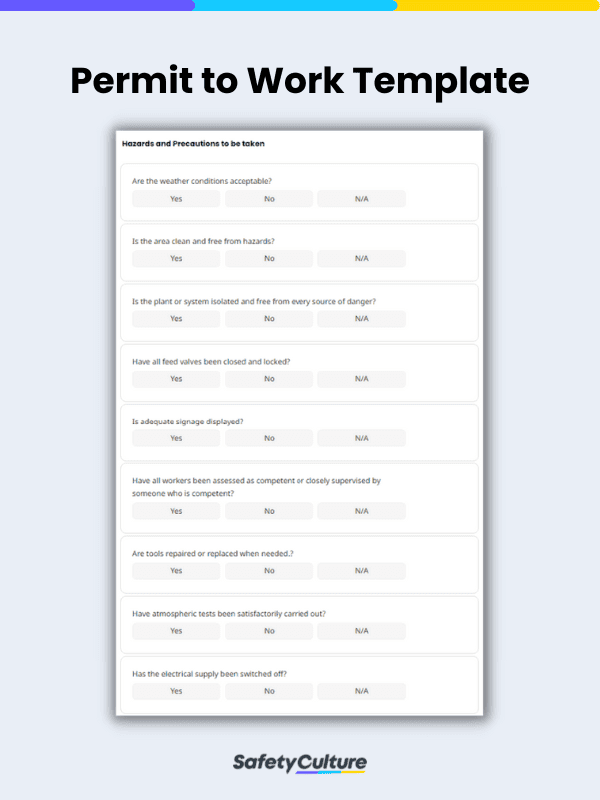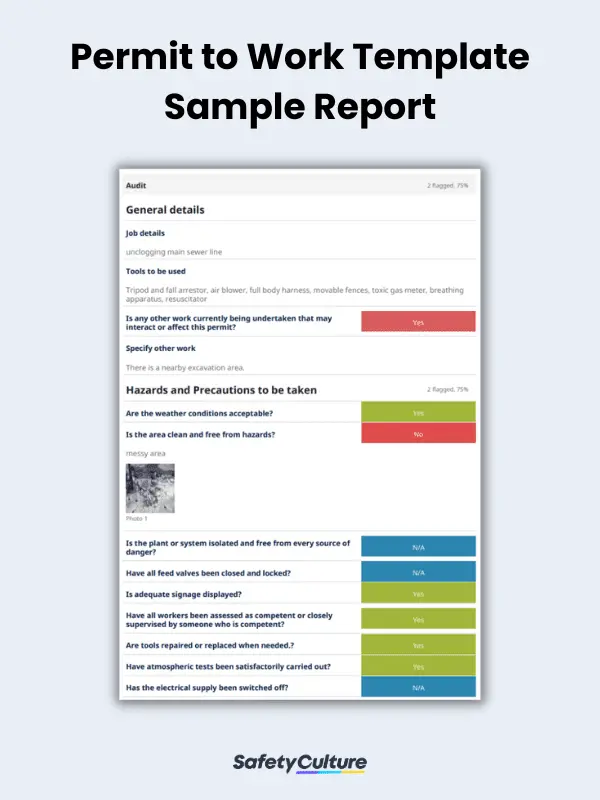What are Permit To Work Templates?
Permit to work templates are tools used by contractors and safety officers to ensure critical safety checks and emergency procedures are followed before hazardous work commences. Common tasks that require permit to work forms are those with high safety risks, including working in confined spaces, hot and cold work, and electrical maintenance activities.
Why Use PTW Templates?
Having a permit to work and the process for issuing it are both essential in ensuring safety in workplaces. They are important because they help identify and control hazards associated with specific work activities, thus also helping prevent accidents and injuries. Permit to Work templates, therefore, ensure that workers are aware of the potential hazards associated with a specific task and the safety measures that need to be put in place to mitigate those hazards.
Permit to work templates also help manage compliance with safety regulations, as well as inform employees about them. As a permit-to-work checklist details the proper safety standards and practices to adhere to, employees using them or filling them out will then be properly educated on their rights and responsibilities, ensuring they are ready for work.
What to Include in a Permit to Work Template
A safety permit to work should be straightforward and comprehensible. It should follow a standard format to record accurate information in providing a clear overview of the task at hand. Here are four main elements of a standard safety permit to work:
- Job overview – This records the job to be done, tools and equipment to use, and other work that is currently undertaken that may affect the permit.
- Hazards and precautions – This involves the potential hazards associated with the job and the necessary actions to prevent injuries and accidents from happening.
- Authorization and acceptance – This confirms that it is safe to carry out the work defined and communicated to all affected workers on site.
- Hand back and cancellation – This section should be accomplished after the work has been performed. It details the confirmation from the person in charge and the authorizing personnel.
Below is a PDF example of a Permit to Work report, filled out for reference:
This sample work permit template can be viewed both in PDF and digital formats.
FAQs About Permit to Work Templates
Aside from containing all the necessary details for a Permit to Work, managers, contractors, and workers can utilize ready-to-use templates such as this as a guide when performing the audit. Leveraging a Permit to Work template increases efficiency and ensures no critical elements are missed.




